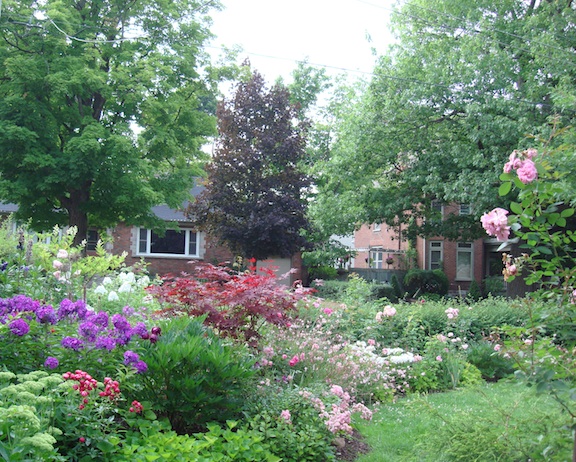I’d love to connect with you! Sign up for my monthly newsletter, "Garden Bliss & Blunder”
Overwintering Roses
Getting roses ready for winter is like putting them to bed.
In colder climates (zones 6 and below), roses begin to go dormant around the end of August...Don't fertilize or deadhead. Leaving them signals the rose to save its energy for strong roots and winter survival.
All the green in the canes, needs time to slide down to the roots to strengthen them over the cold months.

My roses were hit by an early frost which turned the edges of the leaves white.
It can be a romantically gorgeous time of year. BUT... it's still too early to hill up your roses. Wait until there is a hard frost and some of the leaves start to fall off. Sometimes, life gets in the way and we may need to do the fall garden tasks when we can... Just know the best time and work around that.
ROSE TREES need special care:
IF YOU HAVE A ROSE TREE, SEE THIS....
WHAT ABOUT FALL PRUNING ?
You may prefer a clean,tidy garden in the fall, but please leave any seed heads for the birds and leaves stems standing so little birds have shelter from cold winds and snow.
And....PLEASE DON'T cut your roses back.
Don't deadhead after late August (unless you pick a few blooms for your bedside) - If you keep cutting blooms, the rose thinks it should produce more flowers and so it sends energy to the tips of the canes instead of the roots (which protect the rose in winter).
Leave the rest of the blooms for rose hips for birds and colour but most importantly, this signals the rose to go dormant and send its energy to its roots for winter.
Prune roses in the Spring (or when they start to come out of dormancy...)... see more here:
Sometimes, in the late fall, a few canes are long and reach outside the bed to snag your sweater or pet as you walk by.
Cut these canes back just enough to keep them out of your way and from breaking under the weight of ice and snow which could leave an opening for disease or for orphaned insects to hide.
HILLING UP ROSES:
BEFORE YOU DO....remove all the fallen, dead rose leaves that may have Black Spot, or any other disease and put them in the trash and not the compost. Otherwise, those spores will happily stay in the soil under the compost, ready to reappear in the Spring.
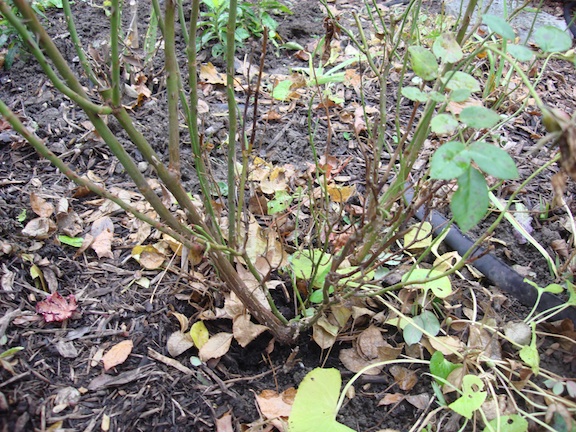
Hilling up roses for winter means taking soil (compost, preferably) and mounding it up over the bud union by about 4 to 5 inches.
If you live in an area with cold winters, (zones 5 and lower) you would have already planted the bud union 3 to 4 inches below the soil's surface ...However, if you didn't, now is the time, so as you hill up your roses, pile on another 6 to 8 inches of soil.
Save the soil from your summer pots and mix it with compost... it's perfect for hilling up.
This will make sure those roots are protected from a destructive "freeze-thaw-freeze" cycle that can happen in late fall or early spring and creates open space around the canes and the soil surface - l places for wee beasties to make a home or ...
WIND-ROCK.... when there is space around the bud union and the soil, leaving it open to the wind moving the plant back and forth allowing water in which will freeze the root.
In the photo below, you can see the stems are still green (but not the brilliant green of summer) and the leaves have fallen.
Because I buried the bud union on these roses a few inches below the surface when I planted them, I only had to hill them up about 4 to 6 inches with compost.
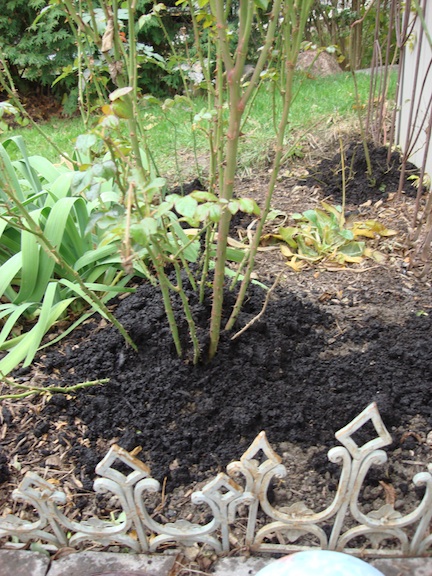
Ice can get into the smallest places, splitting tender stems and freezing roots. If some canes are left too long, they can easily split or break under the weight of the ice and snow.
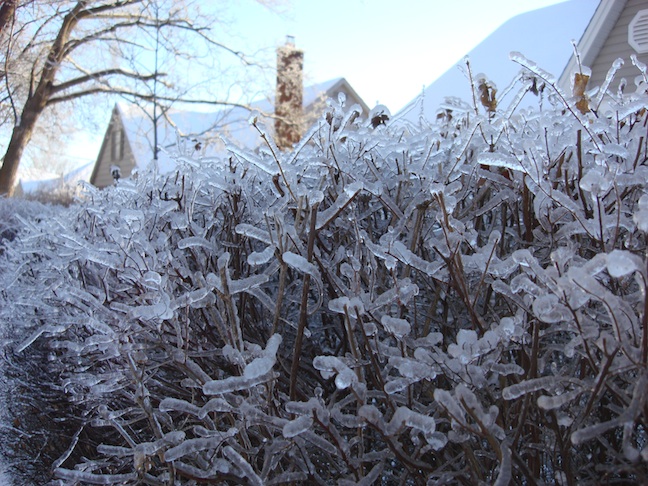
Add Mulch on top of your hilled up soil. Cover bare soil with mulch or leaves.
If your garden is open to wind, you could pound tall wooden stakes along the edge of the garden and attach burlap with staples or tie with twine to the stakes, surrounding the garden. Then fill up the space with leaves.
My neighbours have sugar maples whose leaves break down easily and I collect their bags and dump them all on the rose garden.
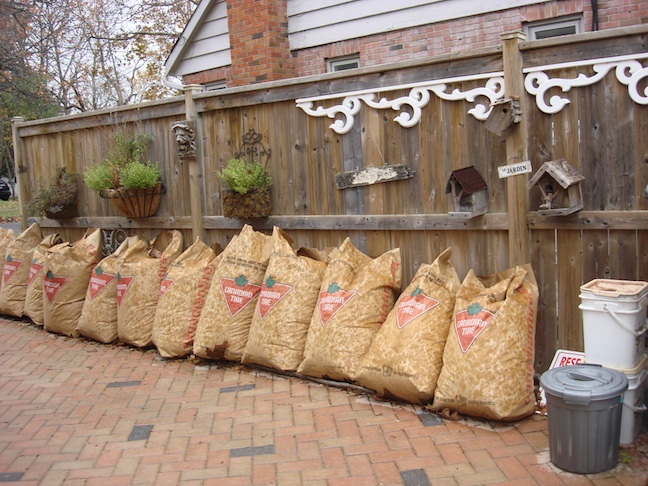
Here are roses buried in leaves and snow
- between a hedge and a barricade of burlap.
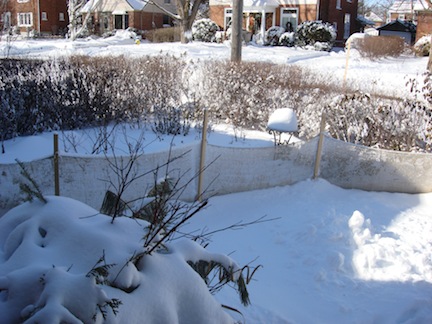
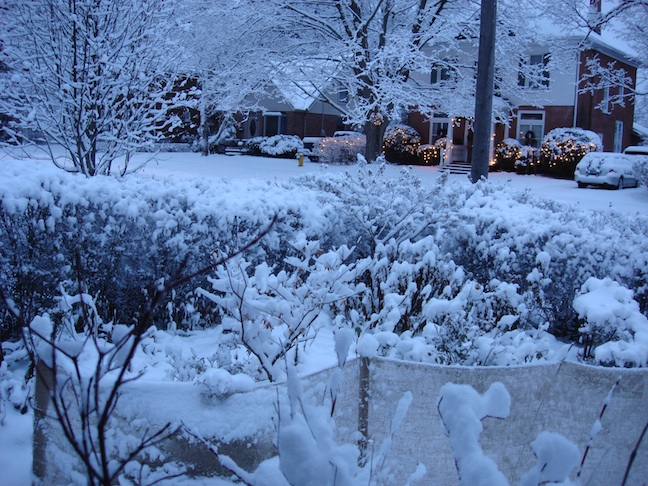
and the next summer....
